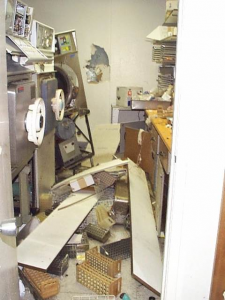Autoclave FAQ
- Pest Management
- Fire Plan Review and Inspection
- Building Codes Enforcement
- ADA Assessment
- Applicable Building Codes
- Building Emergency Coordinators
- Certificate of Completion or Occupancy
- Chartfield Form Codes Permits
- Inspections
- Permit Application Process
- PERMIT APPLICATIONS AND FORMS
- Permit Fee Schedule
- Permit Instructions
- Plan Submittal Guidelines
- Temporary Structures on Campus – Including Tents
- Insurance and Risk Management
- Occupational Medicine
- Industrial Hygiene & Occupational Safety
- Ergonomics
- Camps
- Drones/UAS
- Building and Contents
- Boating & Dive Safety
- Automobile
- Report Lab Closeout
- Radiation Safety
- Hazardous Waste Management
- Chemical and Lab Safety
- Standard Operating Procedures
- Safety Surveys
- Peroxide Forming Compounds
- New Labs, Moving Labs & Closeouts
- Nanoparticles
- Minors and Visitors in the Lab
- Lessons Learned
- Lab Ventilation
- Lab Signage
- Lab Safety Manual
- Hydrofluoric Acid
- Greenhouse Safety
- First Aid Kit Info
- Equipment Purchase Approval
- Equipment Decontamination
- DEA – Controlled Substances
- DBPR – Pharmaceutical Products
- Cryogens
- Compressed Gas
- Chemical Storage and Management
- Chemical Spills
- Chemical Safety Information
- Chemical Inventory
- Chemical Hygiene Plan
- Chemical Exposures
- Acids That Deserve Special Attention
- Biological Safety
- Vaccination Policy for Research Personnel
- Shipping and Transport of Biological Materials
- Select Agents
- Research Involving Flying Insects
- Recombinant & Synthetic Nucleic Acids
- Plant Research
- NIH Guidelines Flowchart
- BloodBorne Pathogen Program
- Biohazardous Waste Disposal
- Biohazard Project Registration
- Autoclaves
- Acute Biological Toxins
- Lab Safety & Research Services
- Clinic Safety
- Chemical Safety
- Animal Research Safety



